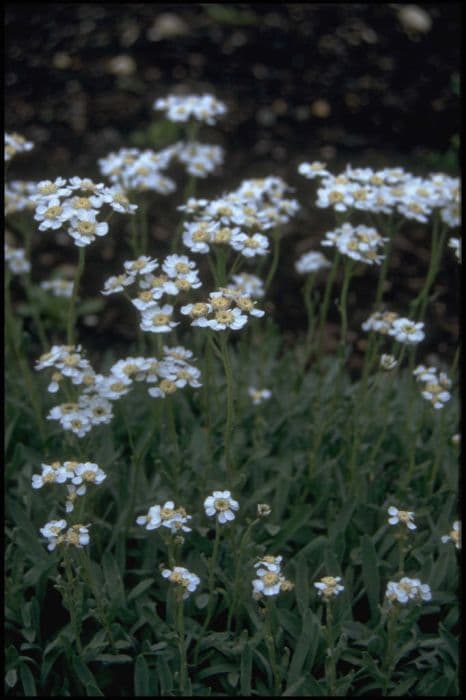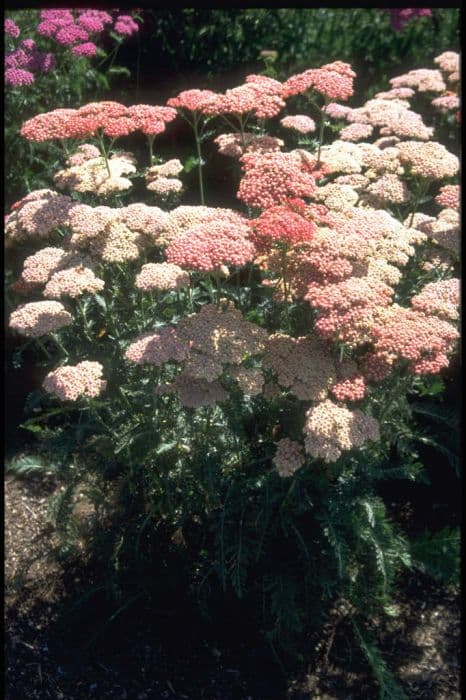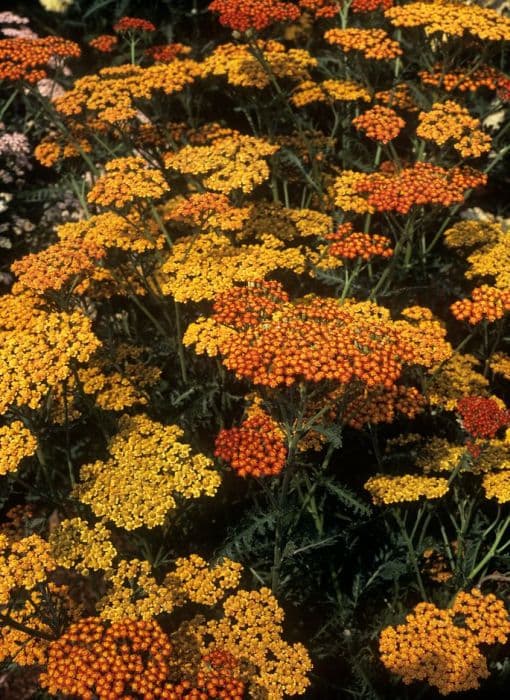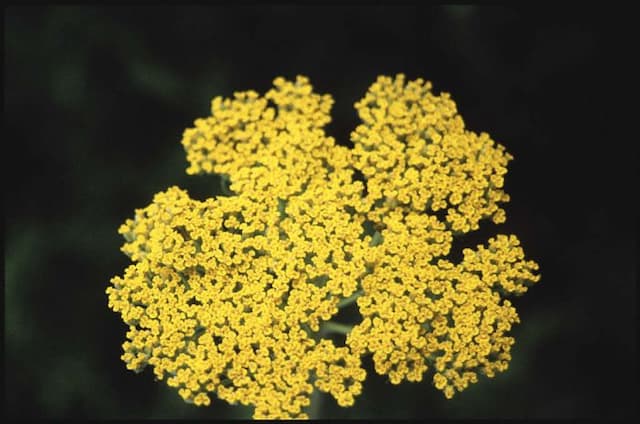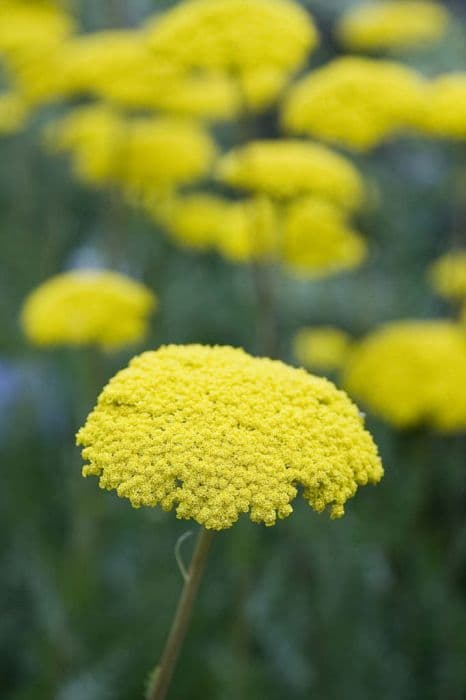Pot Marigold Calendula officinalis Fiesta Gitana Group

ABOUT
Calendula officinalis Fiesta Gitana Group, commonly known as pot marigold, is noted for its vibrant and attractive flowers that exhibit warm shades ranging from bright yellow to deep orange. The flowering heads are typically double or semi-double with rows of petals that are often densely packed, creating a lush and hearty appearance. These colorful blooms may have a darker or contrasting base, which enhances their appeal and adds to the ornamental value of the plant. The foliage of pot marigold is medium green and has a slightly hairy texture, providing a soft, lush backdrop for the brilliant flowers. Leaves are generally oblong to lanceolate with edges that can be smooth or slightly wavy and toothed. The overall form of the plant is bushy, with stems that are sturdy and branching, creating a full and rounded presence in garden beds and borders. Pot marigold produces a prolific number of flowers over an extended blooming period, which can span from late spring through to early frost, depending on the climate and growing conditions. The plant is also known for its aromatic leaves, which have a distinct, slightly spicy scent that some find pleasing, while it may deter certain pests. As an ornamental, pot marigold adds a splash of color to a variety of garden settings, such as traditional flower beds, borders, cottage gardens, and even container arrangements. Its cheerful appearance is often utilized in annual displays, where it harmonizes well with other flowering plants, offering a sustained and lively show of color throughout the growing season.
About this plant
 Names
NamesFamily
Asteraceae.
Synonyms
Pot Marigold, English Marigold, Ruddles, Scottish Marigold.
Common names
Calendula officinalis Fiesta Gitana Group.
 Toxicity
ToxicityTo humans
Pot marigold is generally considered to be non-toxic to humans. It has been traditionally used in culinary and medicinal applications without adverse effects when used in appropriate amounts. However, some individuals may have an allergic reaction to it. Ingesting pot marigold in large quantities could potentially cause stomach upset or an adverse reaction in sensitive individuals. It is always recommended to exercise caution and consult with a healthcare provider before ingesting any plant material for medicinal purposes.
To pets
Pot marigold is not typically toxic to pets. It is often considered safe for dogs and cats, and is sometimes used in pet foods as a colorant. However, some pets may have individual sensitivities or allergies. Ingesting large amounts could potentially cause mild gastrointestinal upset, such as vomiting or diarrhea, in sensitive animals. Always monitor your pet's reaction to new substances and consult with a veterinarian if in doubt.
 Characteristics
CharacteristicsLife cycle
Annuals
Foliage type
Deciduous
Color of leaves
Green
Flower color
Mixed
Height
1 feet (30 cm)
Spread
1 feet (30 cm)
Plant type
Herb
Hardiness zones
2-11
Native area
Mediterranean
Benefits
 General Benefits
General Benefits- Attracts pollinators: Fiesta Gitana attracts bees and butterflies, enhancing pollination in gardens.
- Edible flowers: The petals can be used to add color to salads and other dishes.
- Easy to grow: It is known for being hardy and easy to cultivate, even for novice gardeners.
- Drought-tolerant: Once established, it's fairly tolerant to dry conditions, requiring minimal watering.
- Companion planting: Can be used in vegetable gardens to deter certain pests and benefit other plants.
- Ornamental uses: With its bright and varied colors, it is popular for decorative purposes in gardens and as cut flowers.
- Long blooming season: Offers a lengthy season of blooms from early summer to frost.
- Self-seeding: Can propagate itself by dropping seeds, ensuring continued growth season after season.
 Medical Properties
Medical Properties- Anti-inflammatory: Calendula has been traditionally used to help reduce inflammation and relieve inflammatory skin conditions.
- Wound healing: The flowers have compounds that may promote wound healing and the regeneration of skin tissue.
- Antiseptic: Calendula contains antimicrobial properties that may help prevent infection in minor wounds or skin irritations.
- Antispasmodic: It may offer antispasmodic benefits, helping to relieve muscle spasms or cramps.
- Astringent: The astringent properties of Calendula may assist in toning the skin and reducing bleeding in minor cuts.
- Emmenagogue: Historically, Calendula has been used to help stimulate menstrual flow.
- Choleretic: The plant may increase bile production and secretion, aiding in digestion and gallbladder function.
 Air-purifying Qualities
Air-purifying QualitiesThis plant is not specifically known for air purifying qualities.
 Other Uses
Other Uses- Calendula flowers can be used as a natural dye for fabrics, providing a range of colors from yellow to orange, depending on the mordant used.
- The bright petals of Calendula can be used to add color to salads, soups, and stews as an edible garnish.
- Calendula petals are sometimes used in homemade cosmetics, such as lotions and balms, for their vibrant color and skin-soothing properties.
- The plant can function as a companion plant in vegetable gardens, potentially deterring certain pests and attracting beneficial insects.
- Flower petals can be infused in oils to create a flavored oil for culinary purposes, adding a subtle peppery taste to dishes.
- Calendula flowers can be scattered in bathwater for a luxurious and skin-softening bathing experience.
- The petals can be used to make a natural yellow food coloring for cakes and pastries instead of synthetic dyes.
- When planted strategically, Calendula can be used in landscape design to create visually striking patterns and borders due to its bright colors.
- Calendula flowers are suitable for making biodegradable confetti for weddings or other celebrations, as they are colorful and environmentally friendly.
- The plant may be used in natural pest control remedies, as certain compounds found in Calendula are unpalatable to some garden pests.
Interesting Facts
 Feng Shui
Feng ShuiThe Marigold is not used in Feng Shui practice.
 Zodiac Sign Compitability
Zodiac Sign CompitabilityThe Marigold is not used in astrology practice.
 Plant Symbolism
Plant Symbolism- Healing: Calendula officinalis, commonly known as Pot Marigold, has been used in herbal medicine for its healing properties. It traditionally symbolizes physical recovery and is often associated with the ability to cure ailments.
- Protection: Pot Marigold is believed to possess protective qualities. In the past, it was used in potions or hung in homes to safeguard against evil spirits and illnesses.
- Comfort: The warm, vibrant colors of the Pot Marigold flowers evoke a sense of comfort and solace, symbolizing the provision of comfort in times of distress.
- Sunshine and Positivity: The bright and sunny appearance of the Pot Marigold can represent joy, positivity, and a sunny disposition, symbolizing the light and warmth of the sun.
- Renewal: As an autumn-blooming plant, Pot Marigold is often associated with themes of renewal and the cycle of life and death, embodying the idea of rejuvenation and new beginnings.
 Water
WaterPot marigold should be watered thoroughly, allowing the water to penetrate the root zone, and then let the top layer of soil dry out before watering again. Generally, watering once a week during active growth periods is sufficient, but this can vary depending on climate and soil conditions. If the weather is particularly hot or dry, you may need to increase the frequency to twice a week. Water with about 1 to 2 gallons per plant each time, ensuring even soil moisture. Always avoid overhead watering to minimize the risk of leaf and flower diseases; instead, water at the base of the plant.
 Light
LightPot marigold thrives in full sun, meaning at least 6 to 8 hours of direct sunlight per day. The best spot for this plant is in an area that receives morning sunlight and is perhaps lightly shaded during the hottest part of the afternoon. They can tolerate some partial shade, but flowering may be reduced in less than optimal light conditions.
 Temperature
TemperaturePot marigold prefers moderate temperatures, but it can withstand a wide range. It can survive minimum temperatures down to 25°F, although frost may damage the plant. The maximum temperature for a thriving pot marigold is around 85°F, with the ideal temperature range for growth being 60°F to 70°F. In too much heat, the plant may not perform as well and could be prone to stress.
 Pruning
PruningPruning pot marigold encourages bushier growth and more blooms. Deadheading, or removing spent flowers, should be done regularly to prolong the flowering period and maintain the plant's appearance. The best time to prune for shaping is in the early spring or when new growth appears. During the growing season, pinch back the tips to promote branching and remove any dead or damaged foliage.
 Cleaning
CleaningAs needed
 Soil
SoilPot marigold thrives in well-draining soil with lots of organic matter. A mix of two parts garden soil, one part compost or well-rotted manure, and one part perlite or sand is ideal. Maintain the soil pH between 6.0 and 7.0 for optimal growth.
 Repotting
RepottingPot marigold, typically grown as an annual, does not usually require repotting. If grown in containers, repot every 1 to 2 years or when the plant outgrows its current pot, using fresh soil mix.
 Humidity & Misting
Humidity & MistingPot marigold prefers moderate humidity levels but is quite adaptable to different humidity conditions and can tolerate the dry air found in most homes and gardens without any special requirements.
 Suitable locations
Suitable locationsIndoor
Ensure full sun, well-draining soil, and regular watering.
Outdoor
Full sun, plant in well-drained soil, water as needed.
Hardiness zone
2-11 USDA
 Life cycle
Life cycleThe life cycle of the Pot Marigold, Calendula officinalis Fiesta Gitana Group, begins with seed germination, which requires a warm, moist soil environment and typically occurs in spring. After germination, the seedling stage establishes a small rosette of leaves at the soil surface. As the plant enters the vegetative stage, it develops a sturdy stem and a fuller arrangement of leaves, preparing for the onset of flowering. The flowering stage reveals daisy-like blooms ranging in shades from yellow to orange, which can last from late spring through fall, attracting pollinators. Once pollinated, the flowers produce seeds, and as the plant reaches maturity, the life cycle continues as these seeds are either dropped near the parent plant or collected for propagation. During winter or in unfavorable conditions, the plant may die back, but if the seeds are in suitable soil, they will germinate the following spring, continuing the cycle.
 Propogation
PropogationPropogation time
Spring-Early Summer
Propogation: Calendula officinalis Fiesta Gitana Group, commonly known as pot marigold, is best propagated by seeds. This popular method involves sowing the seeds directly into the ground in spring, after the last frost has passed, or starting them indoors about 4 to 6 weeks before the last expected frost. To propagate, simply scatter the seeds over well-drained soil and cover lightly with about 1/4 inch (approximately 6 millimeters) of soil. The seeds usually germinate within 5 to 15 days if kept moist and at a temperature of around 70°F (about 21°C). Thinning seedlings is necessary when they are a few inches tall, to allow approximately 8 to 12 inches (20 to 30 centimeters) between plants, ensuring they have enough space to grow and receive adequate sunlight. This method is both effective and straightforward, allowing gardeners to reliably produce vibrant displays of these charming annuals.
